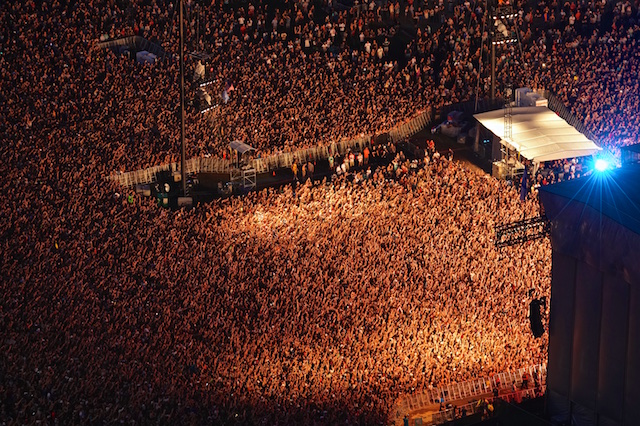Fewer People Arrested At Lollapalooza Over First-Ever 4 Day Festival
By Kirsten Onsgard in Arts & Entertainment on Aug 1, 2016 7:44PM
If your Lollapalooza hangover is extra bad thanks to an extra day, you won’t exactly find relief next year. Next year, Lollapalooza will again be a four-day festival.
In an interview with WXRT Sunday and later on Twitter, Lollapalooza reps confirmed that the 2017 festival will begin on Thursday, spanning Aug. 3 to 7. The festival initially announced its first-ever four-day format this year in conjunction with its 25th anniversary.
This year, the sold-out festival drew an estimated 100,000 people per day, according to a festival spokesperson.
Considering the fact that Lollapalooza was one of the country’s only major festivals to stick to just three days—not to mention that it regularly sells out within minutes—the switch should come as little surprise. Coachella and Austin City Limits now take place over two weekends, and Bonnaroo is four days.
But here’s something surprising: far fewer arrests were made this year, even with the extra day. Twelve people were arrested and 16 citations were issued this year according to the Office of Emergency Management Communication, compared to 34 arrests in both 2015 and 2014.
The city attributes this reduction to its ramped up its security measures this year. Security administered magnetic wand-ing to random attendees upon entry, and there was a heightened police presence and more fencing around the perimeter. Many attendees complained of longer entry lines than in previous years.
Hospitalizations were comparable to previous years. About 236 people were transported to area hospitals, according to OEMC; 238 transports were made in 2015, down from 303 in 2014.
Rates of underage drinking hospitalizations in 2015 were nine times higher during Lollapalooza weekend than other comparable weekends, and by far the most of the year, according to a study by Ann & Robert Lurie Children’s Hospital. Most, the study concluded, were suburban teenagers.
